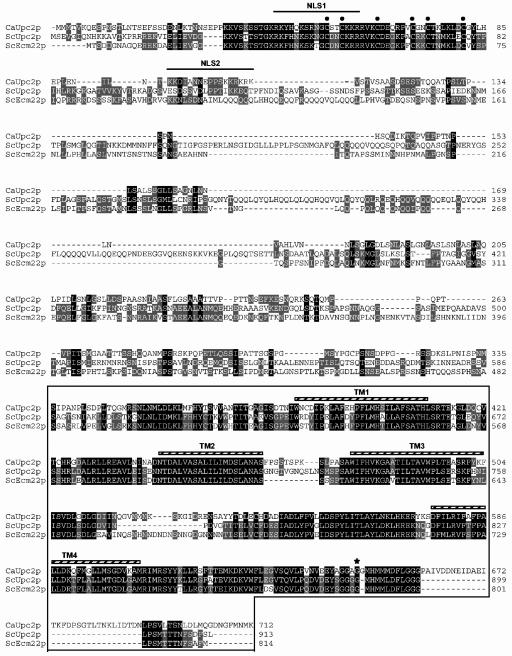FIG. 1.
Homology between the gene product of the C. albicans ORF orf19.391 and S. cerevisiae Upc2p and Ecm22p. Deduced amino acid sequences of C. albicans ORF orf19.391 (CaUpc2p) with S. cerevisiae Upc2p (ScUpc2p) and Ecm22p (ScEcm22p) are compared. Amino acid numbering is shown on the right part of the figure. ORF orf19.391 was translated using the C. albicans genetic code. Two putative bipartite nuclear localization signals, NLS1 and NLS2 (predicted by PSORT II), are indicated by a line. Cysteines of the zinc cluster domains of the various Upc2p proteins are represented by dots. The box at the bottom of the figure corresponds to a highly conserved region among the three proteins which includes four transmembrane segments (TM1 to -4; striped bars) predicted by TMAP. The position of the amino acid change (Gly to Asp) in the S. cerevisiae upc2-1 mutant (11) is shown by an asterisk.

